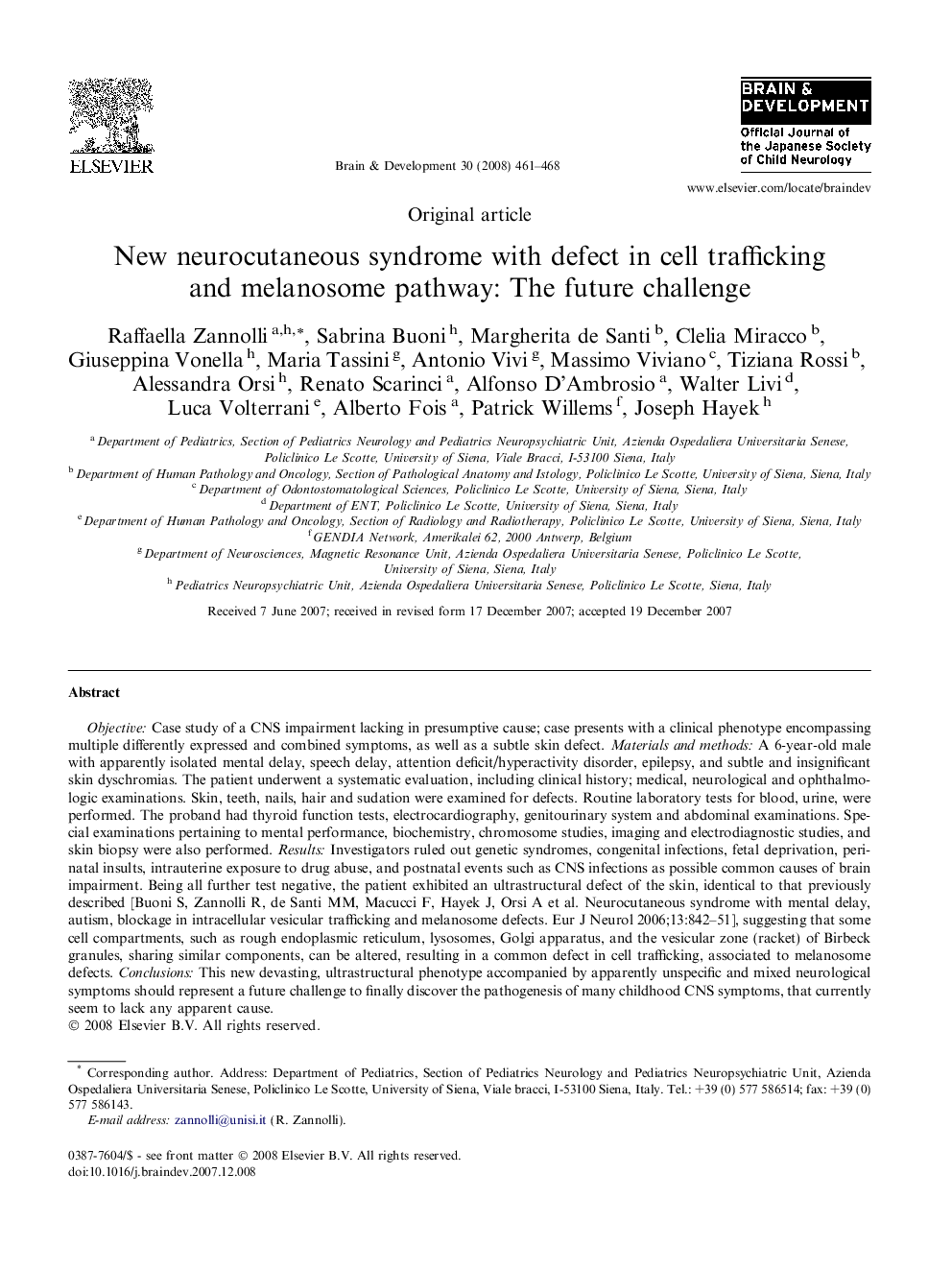| Article ID | Journal | Published Year | Pages | File Type |
|---|---|---|---|---|
| 3038015 | Brain and Development | 2008 | 8 Pages |
Abstract
Objective: Case study of a CNS impairment lacking in presumptive cause; case presents with a clinical phenotype encompassing multiple differently expressed and combined symptoms, as well as a subtle skin defect. Materials and methods: A 6-year-old male with apparently isolated mental delay, speech delay, attention deficit/hyperactivity disorder, epilepsy, and subtle and insignificant skin dyschromias. The patient underwent a systematic evaluation, including clinical history; medical, neurological and ophthalmologic examinations. Skin, teeth, nails, hair and sudation were examined for defects. Routine laboratory tests for blood, urine, were performed. The proband had thyroid function tests, electrocardiography, genitourinary system and abdominal examinations. Special examinations pertaining to mental performance, biochemistry, chromosome studies, imaging and electrodiagnostic studies, and skin biopsy were also performed. Results: Investigators ruled out genetic syndromes, congenital infections, fetal deprivation, perinatal insults, intrauterine exposure to drug abuse, and postnatal events such as CNS infections as possible common causes of brain impairment. Being all further test negative, the patient exhibited an ultrastructural defect of the skin, identical to that previously described [Buoni S, Zannolli R, de Santi MM, Macucci F, Hayek J, Orsi A et al. Neurocutaneous syndrome with mental delay, autism, blockage in intracellular vesicular trafficking and melanosome defects. Eur J Neurol 2006;13:842-51], suggesting that some cell compartments, such as rough endoplasmic reticulum, lysosomes, Golgi apparatus, and the vesicular zone (racket) of Birbeck granules, sharing similar components, can be altered, resulting in a common defect in cell trafficking, associated to melanosome defects. Conclusions: This new devasting, ultrastructural phenotype accompanied by apparently unspecific and mixed neurological symptoms should represent a future challenge to finally discover the pathogenesis of many childhood CNS symptoms, that currently seem to lack any apparent cause.
Related Topics
Life Sciences
Neuroscience
Developmental Neuroscience
Authors
Raffaella Zannolli, Sabrina Buoni, Margherita de Santi, Clelia Miracco, Giuseppina Vonella, Maria Tassini, Antonio Vivi, Massimo Viviano, Tiziana Rossi, Alessandra Orsi, Renato Scarinci, Alfonso D'Ambrosio, Walter Livi, Luca Volterrani, Alberto Fois,
